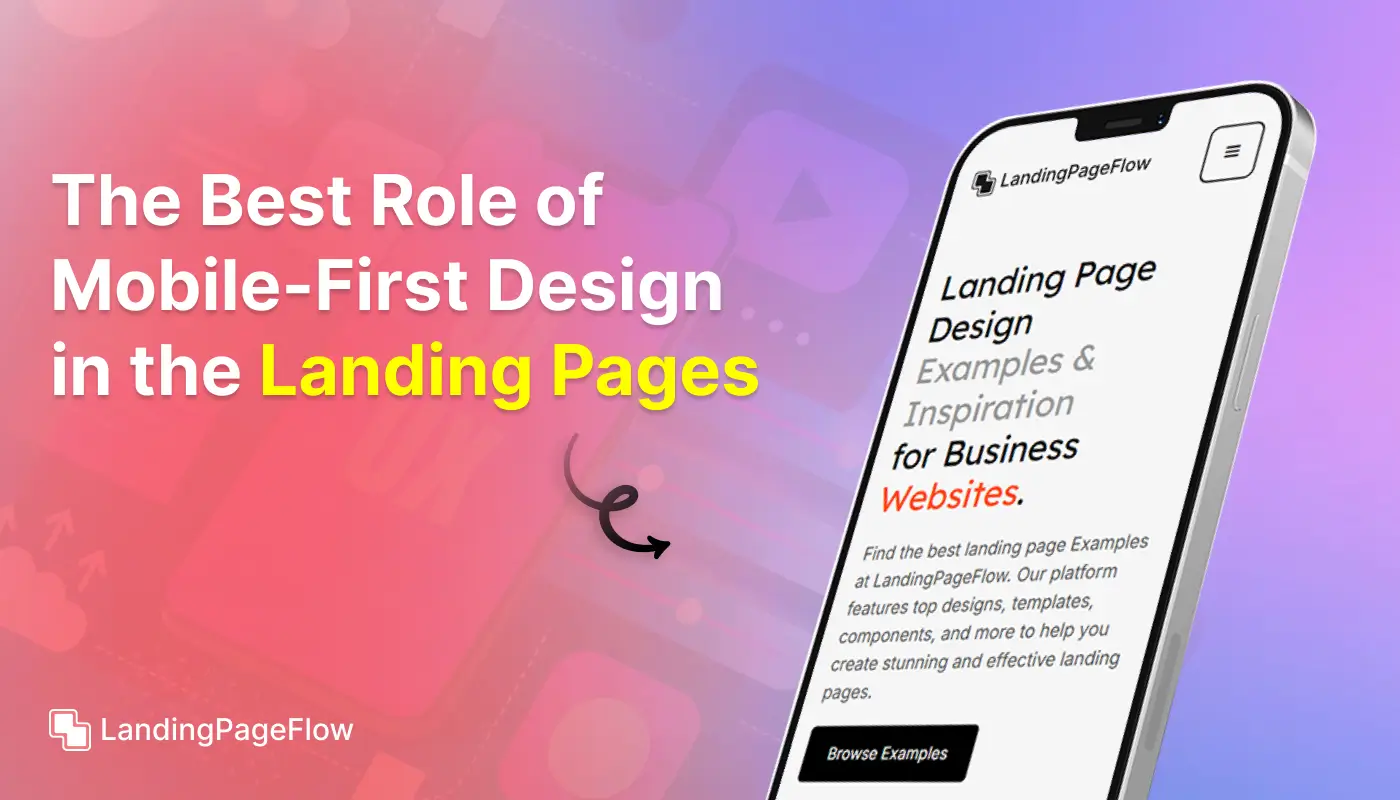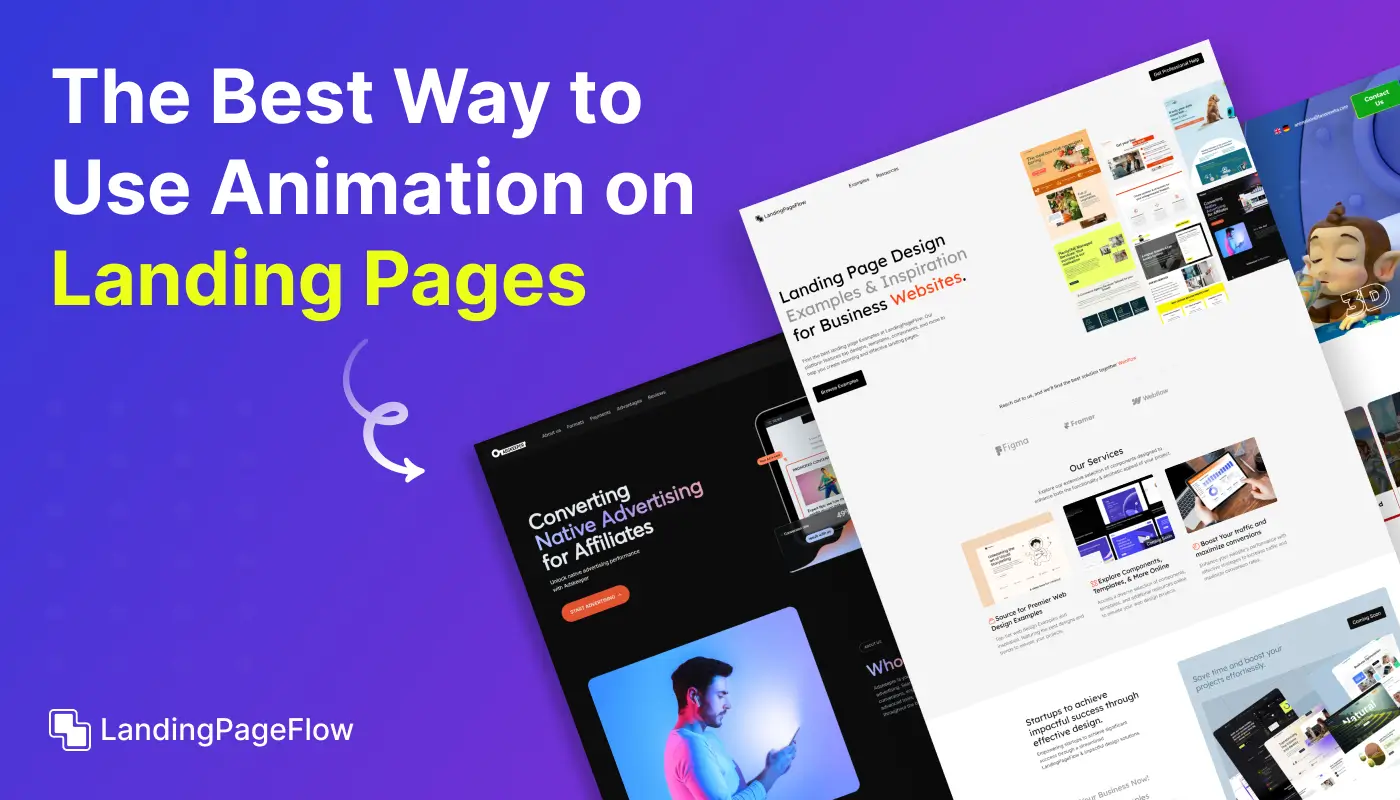How to Create a Winning Digital Marketing Agency Landing Page

November 14, 2025
A landing page is often the first touchpoint where potential clients decide if your agency deserves their trust. It must showcase professionalism while driving action.
Strong visuals, compelling copy, and a clear value proposition are essential to stand out in today’s crowded digital space. Every element should guide visitors toward conversion. Subtle yet effective trust signals matter.
Clients seek credibility, so testimonials, case studies, and proof of past success become powerful tools that establish authority. Clarity always outperforms complexity.
Calls-to-action need to be strategically placed, persuasive, and benefit-driven to ensure visitors feel confident in taking the next step. A seamless experience across devices improves engagement and results.
Mobile responsiveness can no longer be ignored as more prospects research services on their smartphones.
High-converting digital marketing agency landing pages balance creativity with data-backed design. By focusing on audience needs, you can turn casual visitors into long-term clients.
"Need a page that sells your agency services?
Access your free proven framework & transform visitors into paying clients."
Table of Contents
- Introduction
- What Makes a Winning Digital Marketing Agency Landing Page?
- Essential Elements of a High-Converting Digital Marketing Landing Page
- Clear, Engaging Headline
- Service Offerings & Value Proposition
- Testimonials and Social Proof
- Lead Capture Forms and CTAs
- Portfolio and Case Studies
- Best Practices For Designing a Digital Marketing Agency Landing Page
- Focus on User Experience (UX)
- Mobile Optimization
- Consistent Branding
- Speed and Performance
- How to Drive Traffic to Your Digital Marketing Landing Page?
1. Introduction
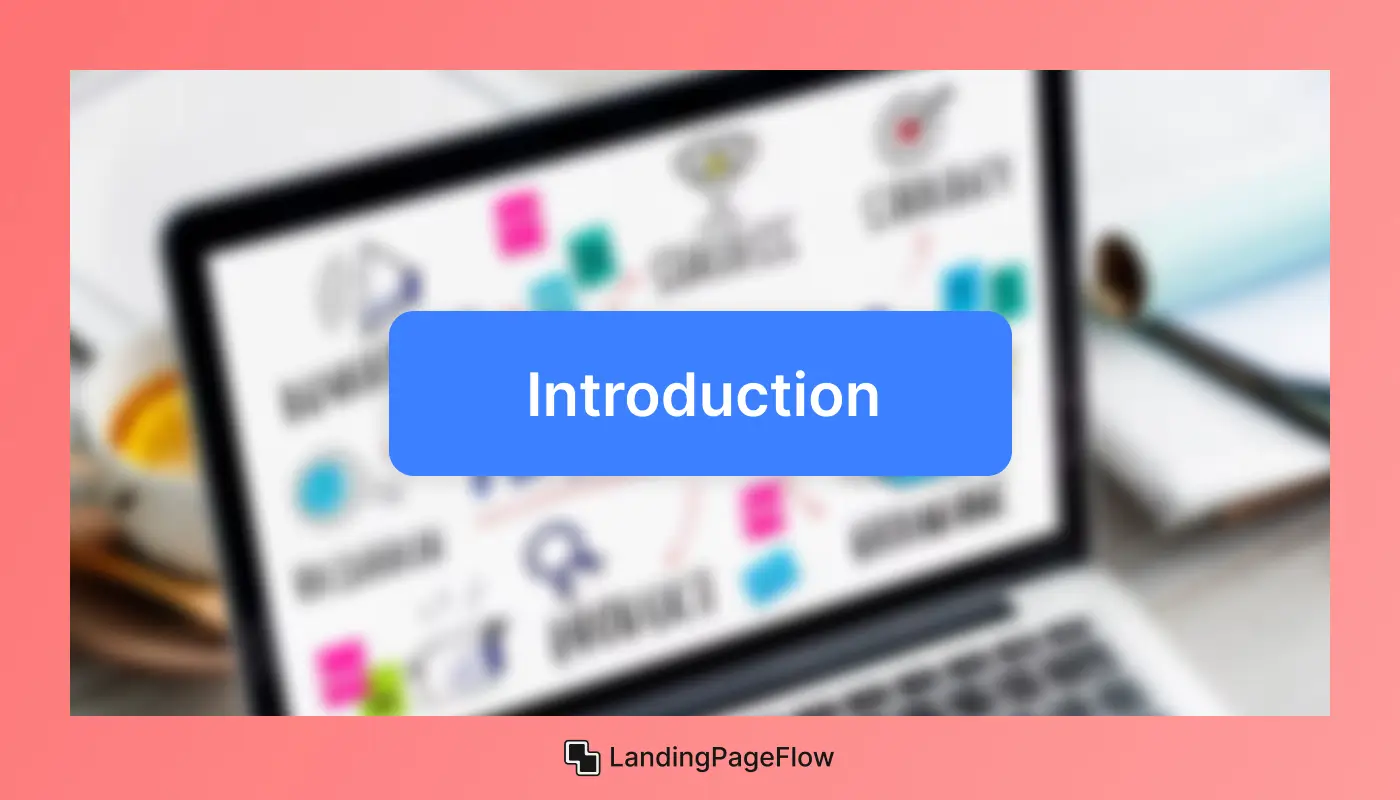
Digital marketing agencies play a vital role in helping businesses grow and succeed online. However, in an industry filled with competition, having a high-converting landing page can set you apart.
A landing page acts as the first touchpoint between your agency and potential clients, making it a crucial element of your online marketing strategy.
To effectively attract clients, your digital marketing agency landing page needs to showcase your expertise, communicate the value of your services, and make it easy for visitors to get in touch with you.
By designing a landing page that speaks directly to your target audience’s pain points and desires, you can increase your chances of turning visitors into qualified leads.
2. What Makes a Winning Digital Marketing Agency Landing Page?
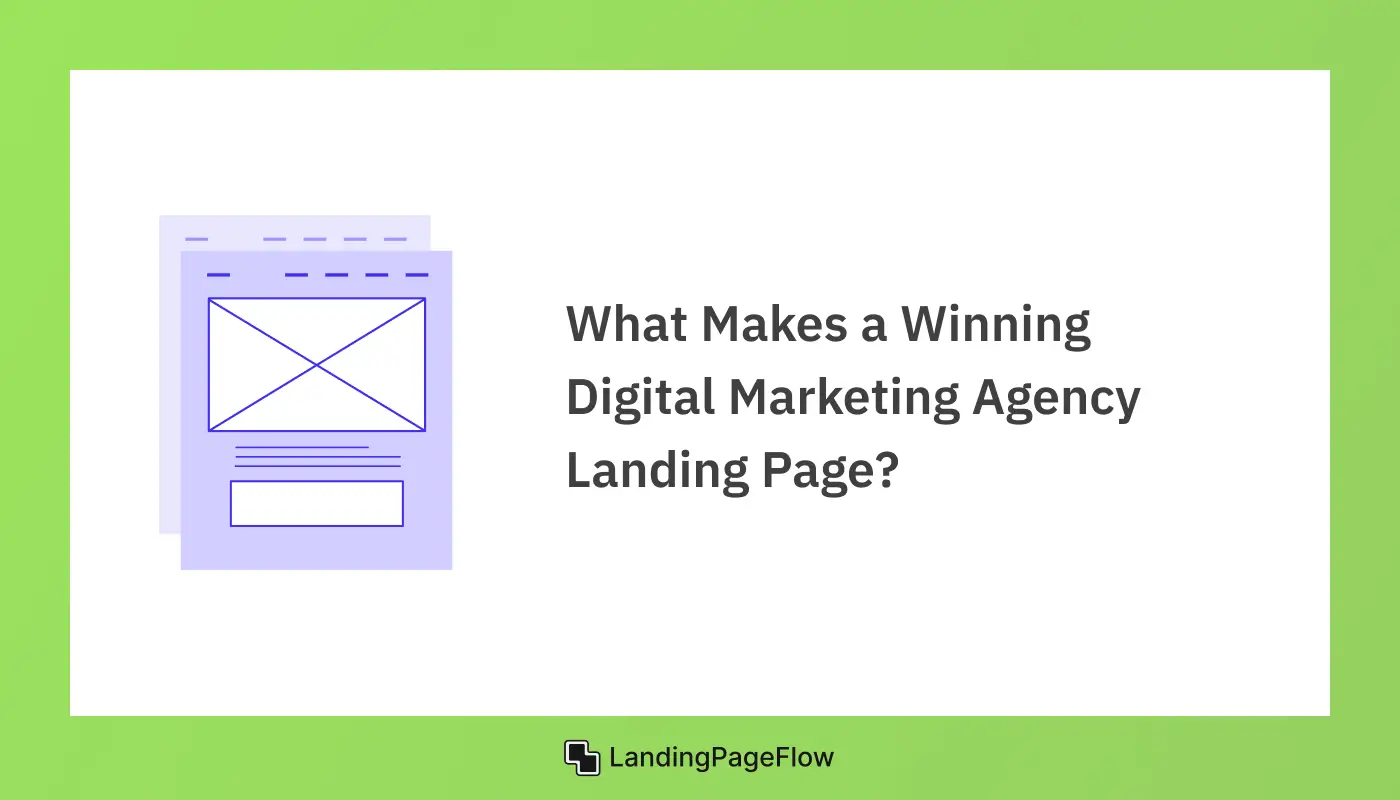
A successful digital marketing agency landing page should:
- Be Simple and Clear: Visitors should immediately understand what your agency does and how it can benefit them.
- Offer Value: Your landing page must communicate the value you provide, whether it's through your services, expertise, or unique selling points.
- Build Trust: Show visitors that you're a reliable and professional agency by including testimonials, client logos, and case studies.
- Encourage Action: Clear CTAs should guide visitors toward taking the next step, whether it’s scheduling a consultation, signing up for a newsletter, or requesting a quote.
3. Essential Elements of a High-Converting Digital Marketing Landing Page
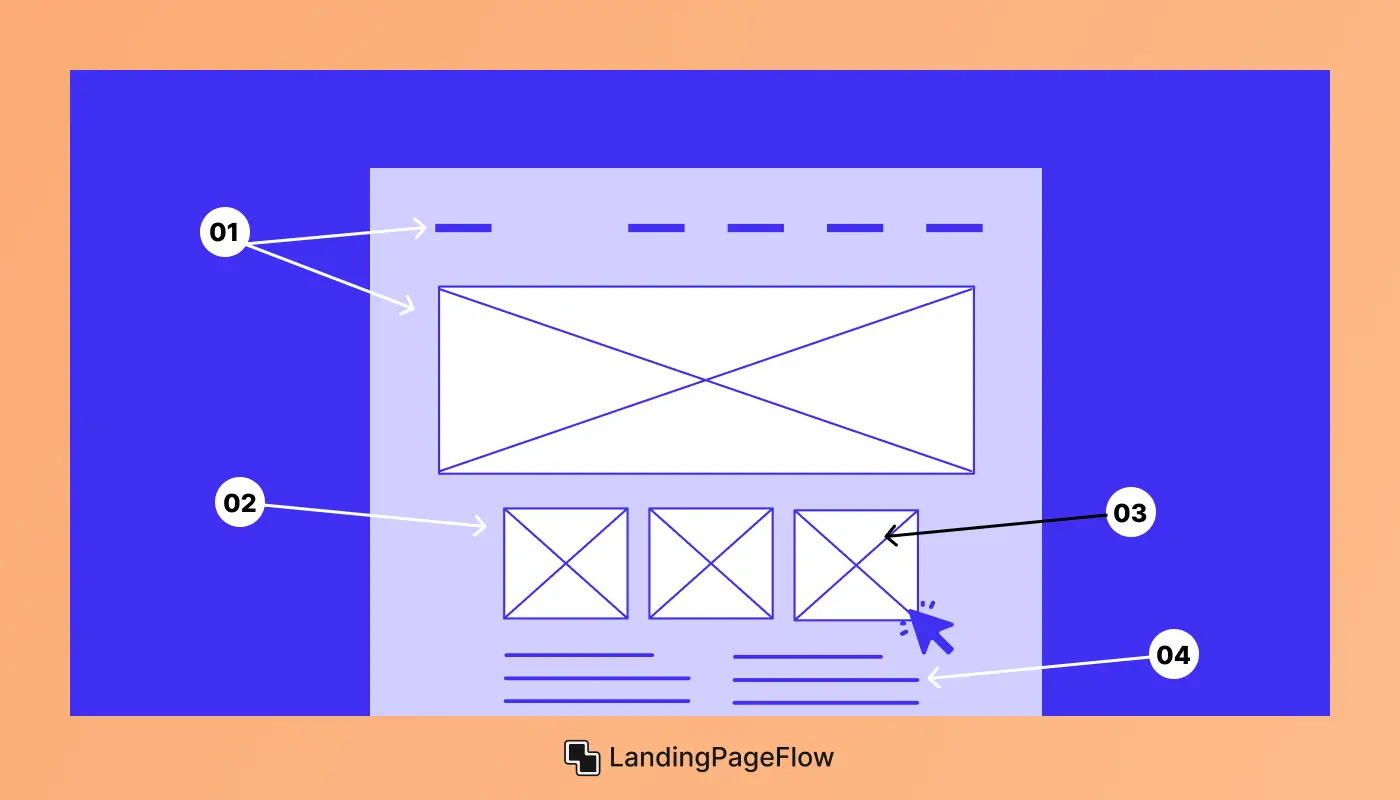
To create a landing page that works, you need to include key elements that both engage your audience and encourage conversions.
Clear, Engaging Headline
The headline is the first thing visitors see when they land on your page, and it plays a pivotal role in grabbing their attention. Make sure your headline is:
- Relevant: Clearly state what your agency does. Avoid vague language.
- Benefit-Oriented: Focus on what the visitor stands to gain from working with you.
- Concise: Keep your headline simple and to the point, delivering your message in just a few words.
For example:
"Grow Your Business Online with Expert Digital Marketing Strategies"
Service Offerings & Value Proposition
Your visitors need to know what services you offer and how you can help them achieve their goals. Your value proposition should:
- Highlight Key Services: Include the main services your agency offers, such as SEO, PPC, social media marketing, content marketing, or web design.
- Explain the Benefits: Go beyond listing services and explain the direct benefits that clients can expect from working with you. For example, instead of just "SEO," explain how your SEO services can help businesses get more organic traffic and increase sales.
- Address Pain Points: Speak directly to the challenges your potential clients face. How can you solve their problems with your digital marketing services?
Testimonials and Social Proof
Building trust is crucial for convincing potential clients to choose your agency. Adding social proof, such as testimonials, client logos, and reviews, can significantly boost your credibility. Here’s how to use social proof effectively:
- Client Testimonials: Include testimonials from happy clients who can vouch for the quality of your services.
- Case Studies: Display examples of successful campaigns or case studies that show how your digital marketing efforts have driven results for previous clients.
- Client Logos: Show logos of notable clients you’ve worked with (with their permission) to further build trust and establish your authority.
Lead Capture Forms and CTAs
Your landing page should have one or more CTAs that guide visitors toward taking the next step, whether it’s filling out a contact form, signing up for a consultation, or downloading a resource.
- Make it Easy to Contact You: Offer multiple ways for visitors to get in touch, such as a contact form, phone number, or email address.
- Compelling CTAs: Use actionable language in your CTAs, such as “Request a Free Consultation,” “Get Your Free Marketing Audit,” or “Start Growing Your Business.”
- Lead Capture Forms: Keep your forms short and easy to complete. Ask for only essential information, such as name, email, and phone number, to avoid overwhelming visitors.
Portfolio and Case Studies
Showcase the work your agency has done by displaying a portfolio or case studies. Potential clients want to see the kind of results they can expect when working with you. Here's what you can include:
- Project Examples: Display recent projects you’ve completed for clients, including website redesigns, social media campaigns, and PPC ads.
- Detailed Case Studies: Highlight specific challenges, strategies, and outcomes from past campaigns to demonstrate your agency's expertise and problem-solving abilities.
- Before-and-After Comparisons: Where possible, show tangible results, such as increased website traffic, higher conversion rates, or a boost in sales, to demonstrate the effectiveness of your strategies.
4. Best Practices For Designing a Digital Marketing Agency Landing Page
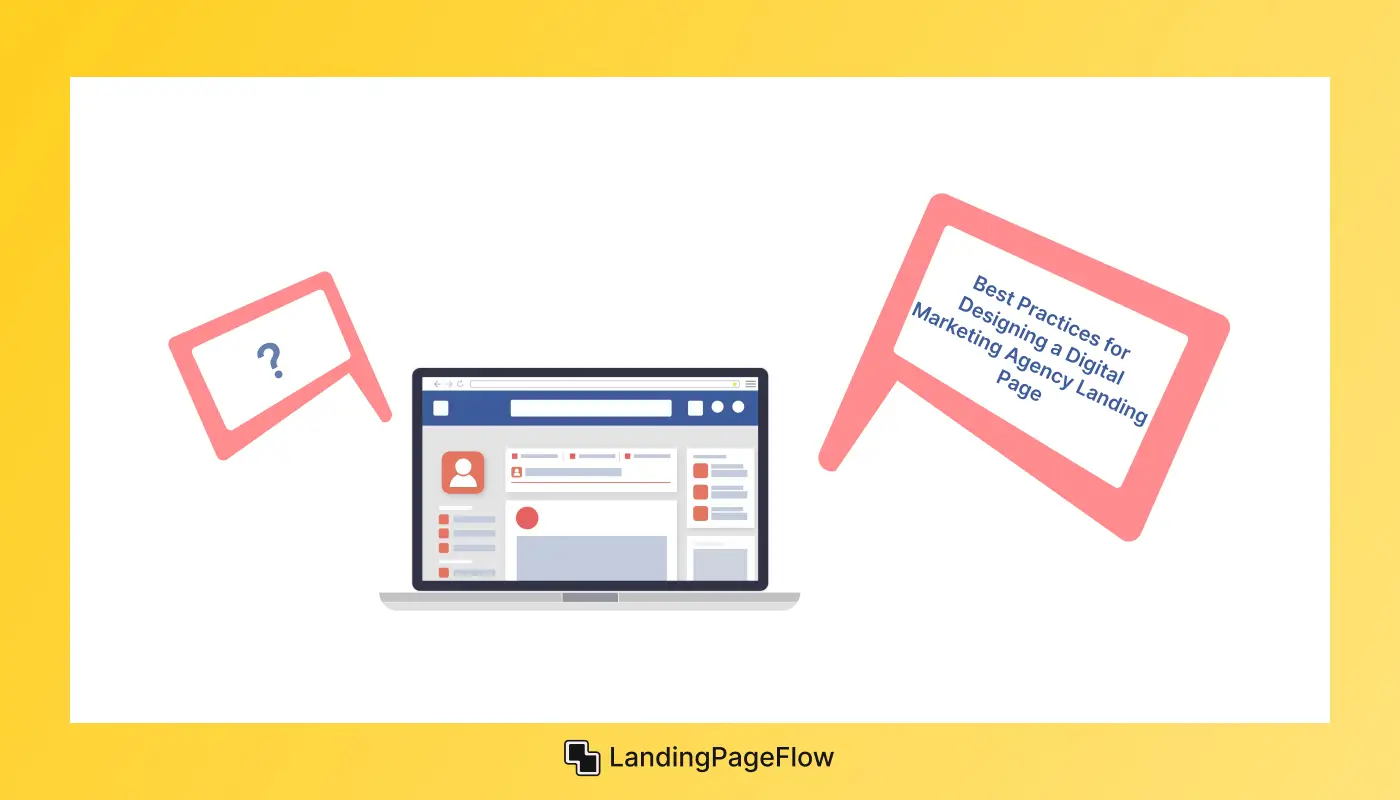
Design is key to creating a landing page that resonates with your target audience. Here are some best practices to ensure your page is effective:
Focus on User Experience (UX)
Your landing page should offer a seamless user experience. Consider these aspects of UX:
- Clear Navigation: Limit navigation options to avoid distracting visitors from your main goal.
- Easy-to-Find Information: Ensure that key details, such as services and CTAs, are visible without visitors having to scroll too far.
- Readability: Use legible fonts, short paragraphs, and clear headings to make your content easy to digest.
Mobile Optimization
A significant portion of web traffic comes from mobile devices. Ensure that your landing page is mobile-friendly by:
- Using Responsive Design: Ensure your page adapts to all screen sizes and devices.
- Optimizing Loading Speed: Mobile users expect quick load times. Compress images and optimize elements for faster performance.
Consistent Branding
Your landing page should reflect your agency’s brand identity. Consistent branding builds recognition and trust:
- Brand Colors: Use your brand’s colors to create a cohesive look that aligns with your company’s identity.
- Logo and Typography: Include your logo and consistent typography to further reinforce your brand.
Speed and Performance
Page load speed directly impacts user experience and conversion rates. A slow-loading landing page can lead to high bounce rates. To optimize speed:
- Compress Images: Large image files can slow down your page. Compress them without compromising quality.
- Use Caching: Leverage browser caching to reduce load times for repeat visitors.
- Minimize Code: Clean up unnecessary code to reduce file sizes and improve loading speeds.
5. How to Drive Traffic to Your Digital Marketing Landing Page?
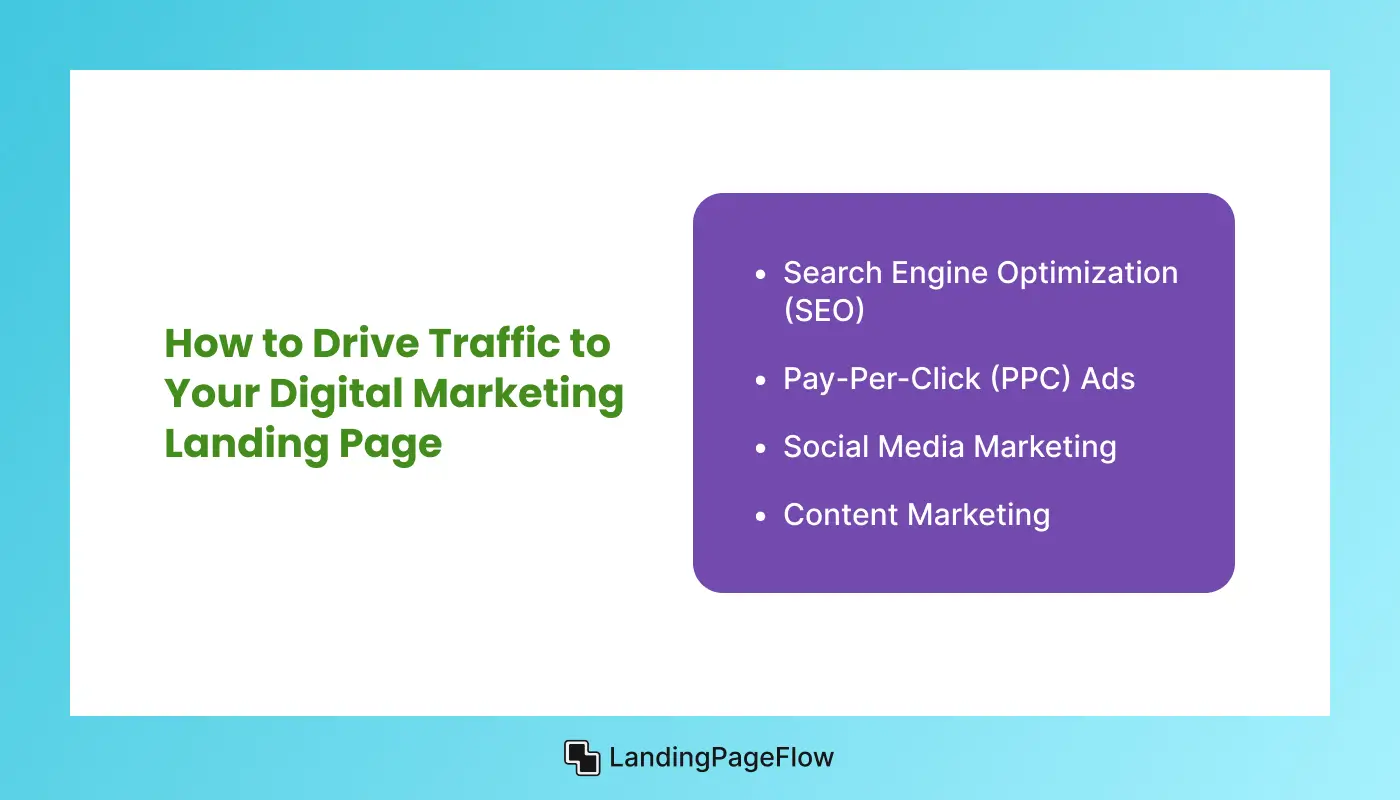
Once your landing page is live, it’s time to drive traffic to it. Here are several ways to increase visibility and generate leads:
- Search Engine Optimization (SEO): Optimize your landing page for relevant keywords to improve its ranking on search engines.
- Pay-Per-Click (PPC) Ads: Run targeted PPC campaigns using Google Ads or Bing Ads to drive traffic from search engines.
- Social Media Marketing: Promote your landing page through your agency’s social media profiles to attract potential clients.
- Content Marketing: Use blog posts, videos, and other content to drive organic traffic and link back to your landing page.
Conclusion
Success in building an agency landing page comes from blending creativity and proven marketing psychology. Visitors should never feel lost or overwhelmed by information.
Trust signals like reviews and success metrics can be the deciding factor for clients comparing agencies. Clear proof removes doubts and accelerates decision-making.
Every call-to-action must be crafted to lead prospects closer to working with your team. Language should focus on benefits instead of features. User experience plays a critical role, as speed, clarity, and easy navigation help keep attention where it matters most.
Friction points reduce conversions. Mobile users now dominate online traffic, making responsive design non-negotiable. Accessibility strengthens credibility and makes your agency stand apart.
Investing time in refining layout, visuals, and messaging ensures your landing page becomes a true client-conversion engine. Strong design means stronger growth.

FAQ
1. What should a digital marketing agency landing page include?
A strong landing page should highlight services, showcase proof like case studies or testimonials, and feature clear calls-to-action to convert leads effectively.
2. How important are visuals on an agency landing page?
High-quality visuals enhance credibility and create emotional connections. Professional imagery, branded graphics, and consistent colors improve trust and engagement.
3. Should I use video on my landing page?
Yes, videos can increase engagement and conversion rates by simplifying complex services, demonstrating results, and creating a more personal connection.
4. How many calls-to-action should my landing page have?
You should include multiple CTAs, strategically placed throughout the page, ensuring prospects can take action without scrolling excessively.
5. What role does mobile optimization play?
Mobile-friendly design is critical since most users browse on smartphones. A responsive landing page ensures fast loading, readability, and higher conversions.
6. How do I track performance of my landing page?
You can use analytics tools like Google Analytics or HubSpot to monitor bounce rates, conversion rates, and user behavior for ongoing improvements.
















